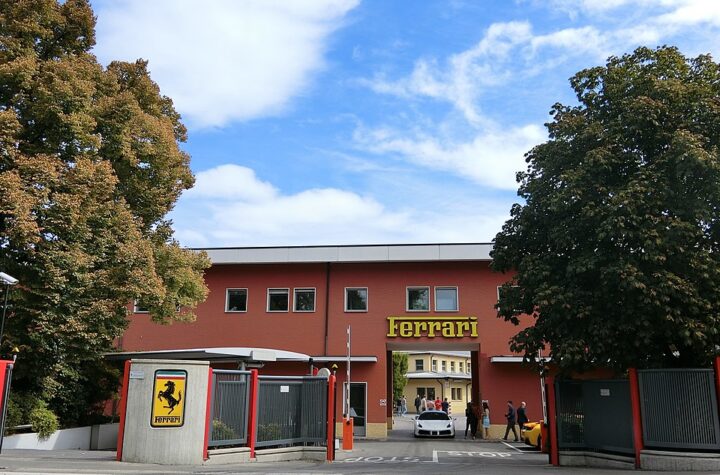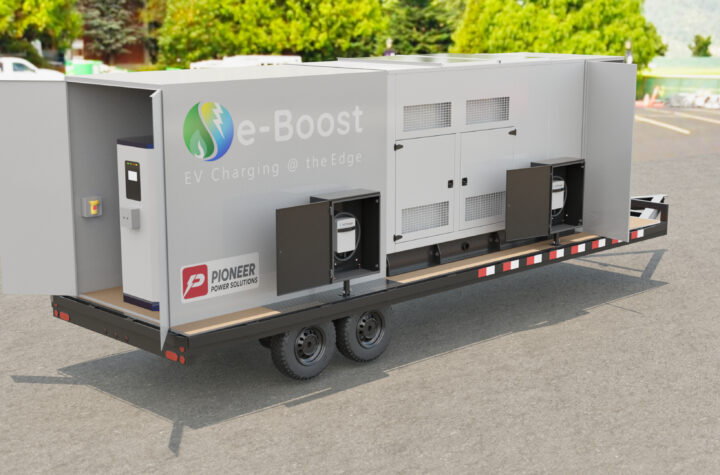
For those of you who complained about the lack of headroom in the Crossfire, Chrysler thinks that it may have solved that problem. This spring, Chrysler will add the Crossfire Roadster to the lineup. With roadsters making up 60 percent of the sales in a segment that includes Porsche Boxster and Audi TT, it was only natural that Crossfire should offer a topless version.  The roadster prototype made its public debut at the 2004 North American International Auto Show, instantly erasing any concerns that the boattail-designed coupe would lose too much character with the top cut off.
The roadster prototype made its public debut at the 2004 North American International Auto Show, instantly erasing any concerns that the boattail-designed coupe would lose too much character with the top cut off.
“When we did the roadster we wanted it to capture the spirit and the drama of the coupe,” says Joe Dehner, director, Small/Premium/ Family Vehicle Design, “not only in rear view but in profile.”
Designers tried to use elements of the coupe’s boattail design while sculpting the shape of the top and the rear of the roadster while carrying over as many components of the coupe as possible.
“It was a real design challenge to get all of these elements to work in the top-down position,” Dehner says.
The roadster was in development right along with the coupe.
“We put the coupe program together with the idea to do this,” says Art Anderson, senior manager, Chrysler Crossfire and Vehicle Concept Development. But he admits that Chrysler engineers had not determined the exact design or configuration of the roadster by the time the coupe was finished.
“Given the set of factors in finding the optimum solution, we had to keep working to bring it together and it did take us a little more time.”
 |
| The joint Chrysler/Karmann -developed power soft top (above) contains 200 moving parts and was designed to “capture the spirit and drama” of the coupe. The coupes rear quarter panel is trimmed and reshaped with dimples stamped into the edge to take up slack (below). The steel tonneau’s farings add to the roadster look. Note the CHMSL running underneath the retractable spoiler. |
|
Anderson says that the development team did consider a retractable hard top but it didn’t fit within the engineering criteria for the project. “Some of these complex top systems take the whole back of the car and tip it off,” Anderson says, “and all the structure goes with it if it’s not done exactly right.”
Fitting the retractable hard top into the smaller space created by leaving the back end intact would have required the top to be broken into three to three-and-a-half segments.
“By the time you create all of the links and mechanisms to do that,” Anderson says, “it’s a pretty formidable task. We really think we’ve found the right combination. It looks good, fits in the car nicely and still leaves some trunk room.” The top is constructed of Alcoa-supplied aluminum castings that are painted black. The highly detailed castings are not only structural, creating a very stable top, (Chrysler has tested it at 150 mph) but also conceal all of the top’s linkage so it isn’t visible from inside the car with the top up. The frame is built up and powder coated at Karmann’s Rhiene facility in Germany. The premium cloth is manufactured by R&S (formerly Hartz), a major supplier of premium cloth tops for the U.S. and European markets.
All of the components are then shipped to the Top Center at Karmann’s Osnabr?ck facility where the material is cut and sewn together and installed to the frame.
The glass is then added, the Power-Packer hydraulics installed and the finished top is tested and validated at the Top Center before being sent to the main assembly line. Crossfire coupes and roadsters are assembled on the same line. The top is packaged into the roadsters 6.5 cu.ft. trunk (7.5 cu.ft. in the coupe).
Before the top can be put down, a separator panel, that’s accessed from the trunk, is pulled down and popped into place, to create a space for the folded top. A warning beep alerts the driver in the event that they haven’t moved the panel into position.
With the top stowed trunk space is 3.5 cu. ft. Anderson says that golf clubs will fit in the trunk with the top down if you take the clubs out of the bag and put the bag in separately. To operate the top, turn the release handle, mounted on the windshield header and pull it down. This releases the top fabric and automatically lowers the side glass. Lift the top approximately 8 in., press the button on the center console and the hard tonneau opens up. The soft top folds in and the hard tonneau closes. The operation takes 22 seconds, which will give you plenty of time to put the top up or down while stopped at a traffic light.
Several steps are taken to add stiffness to the body, steel tubes running the entire length of the A-pillars are welded into a bracket mounted in the sill. A channel, built across the back, not only adds stiffness but serves as the attachment for the hard tonneau. The rear structure from the convertible top back has been retained.
“From a structural standpoint,” says Anderson, “that still leaves a torsional rigidity of 7,300 ft. lb. per degree compared to the coupe at 15,000 ft. lb. per degree. And it gives us a natural frequency of 29 hz to the coupe at 50 hz.” The roadster shares the coupe’s rear fascia and tail lamps. The rear quarter panels are a retrimmed version of the coupes rear quarters.
The roadster panels are sent through two extra stages on the stamping line. The first stage shears about an inch off of the inside of the panel and the second press turns the bottom of the panel down slightly taking up the slack by stamping small dimples into the seam line. The roadster gets all new side glass and a stamped steel power tonneau cover that carries the Crossfire’s ‘spine’ design theme down the center and features sports car-style farings that blend into the sport bars on the backs of the rear seats. An optional clear Plexiglass windblock bolts in between the farings to help reduce wind turbulence. Composite inserts at the forward edge of the tonneau hide the mechanicals when the top is down.
The deployable decklid spoiler was redesigned specifically for the roadster, and the designers worked with engineering both at Chrysler and Karmann to develop an integrated CHMSL that runs the width of the spoiler. The interior is a carryover from the coupe though the roadster gets an exclusive interior color called ‘cool vanilla’ that further highlights the two-tone appearance.
The roadster shares the coupe’s 250 hp, 3.2L 90-degree V-6, 18-valve SOHC engine with a choice of 6-speed manual of 5-speed automatic transmission. The coupe’s independent suspension is carried over, though the roadster rides on Continental sport contact tires that have a straighter tread and softer sidewall to reduce tire noise.
The Continental Teves-supplied stability control system (ESP) has been updated to give the driver more room to find the limits of the car. The roadster outweighs the coupe by about 100 lb., but the extra weight out back actually moves the front to rear weight ratio closer to 50/50.
The roadster comes in two trim levels, the base car (in black only) at $34,960 and the Limited (available in seven colors) starting at $38,920. Roadster buyers can also choose from two new colors, Aero Blue (available on both coupe and roadster for ’05) and a roadster-only pale yellow. An SRT-6 roadster will be available in the fall.
















More Stories
Horse Logos In Cars – Car Brands With Equine History
Durable Engine Labels for Harsh Automotive Conditions
How Does Motorcycle Transport Work? Costs, Methods & Companies